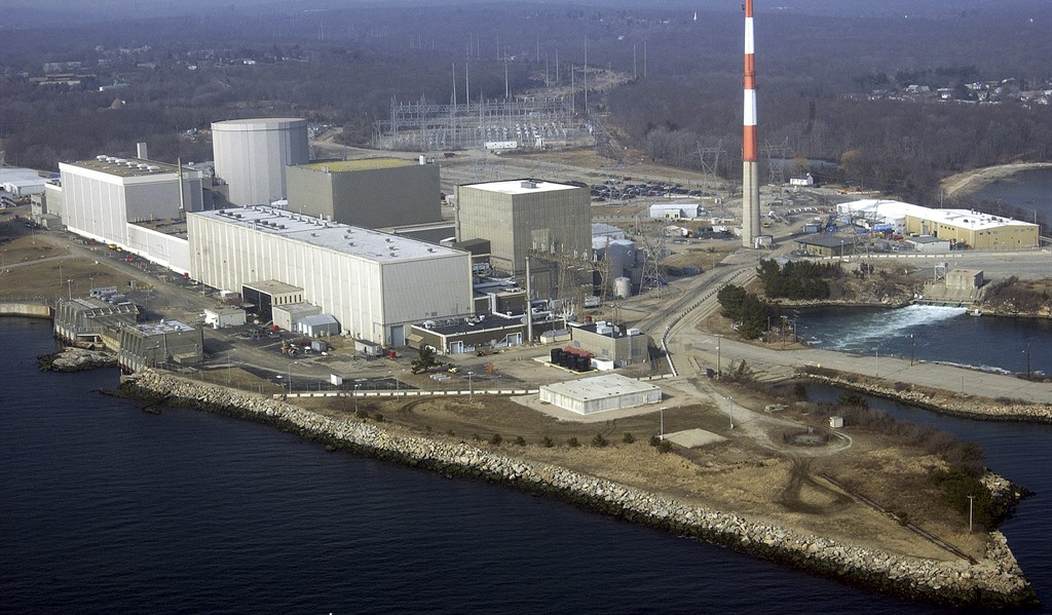On May 29, the Biden administration announced “new steps to bolster [the] domestic nuclear industry,” such as “streamlining licensing processes for building new reactors, extending the life of existing reactors, and expanding capacity of existing reactors.”
According to the administration, “these actions represent the largest sustained push to accelerate civil nuclear deployment in the United States in nearly five decades.”
Moreover, “President Biden will continue to take steps to reestablish U.S. leadership in the industry, including continuing to keep existing nuclear plants operational, supporting the demonstration and deployment of advanced reactor technologies, making permitting processes more efficient and effective, securing and expanding the nuclear fuel supply, strengthening nuclear safety, security, and safeguards, and supporting an ambitious strategy to ensure the nation’s nuclear leadership.”
This is great news.
At its peak, in the early 1990s, the United States had 112 nuclear power plants. Currently, the United States has 54 nuclear power plants in operation. However, nearly half of those, 25, are in the process of being decommissioned. Incredibly, of the 60 nuclear power plants being built around the world, not a single one is under construction in the United States.
In 1971, nuclear power accounted for only 2.4 percent of total power generated in the United States. By 2001, nuclear provided 20.6 percent. But, it has been downhill ever since. Today, nuclear power supplies less than 18 percent.
Recommended
There are many reasons behind the reduction in nuclear power plants over the past few decades.
First and foremost, the mainstream media went into fearmongering mode regarding nuclear power after the partial nuclear meltdown at Three Mile Island in 1979 and the explosion at Chernobyl in 1986. These concerns were brought back to the forefront in 2011 when the Fukushima nuclear power plant in Japan was hit by a tsunami.
Second, building new nuclear power plants has become way too expensive due to government overregulation. As the Mackinac Center notes, “Contemporary American nuclear plants commonly take over a decade to build (assuming the construction plan is not simply abandoned). The NRC has a 32-step construction licensing process, and many of those steps require approval from other regulatory agencies that impose their own multi-step approval processes.”
Third, generous government subsidies for wind and solar power have skewed the market in favor of renewable energy sources. The levelized cost of electricity (LCOE) for existing nuclear power is $33 per MWh whereas the LCOE of new wind power is $90 per MWh and solar is $88.7 per MWh, according to the Institute for Energy Research.
However, massive federal subsidies for wind and solar power have concealed the actual cost of these power sources to consumers. As the U.S. Energy Information Administration notes, “During FY 2016–22, nearly half (46%) of federal energy subsidies were associated with renewable energy.”
Now, here is the truth about nuclear power.
Nuclear power is safe. There have been two major accidents (Chernobyl and Fukushima) at nuclear power plants “in over 18,500 cumulative reactor-years of commercial nuclear power operation in 36 countries.” One was a man-made disaster: Chernobyl. The other was a natural disaster: Fukushima. Other than these two incidents, nuclear power has a pristine record.
Nuclear power is reliable. Unlike wind and solar, which depend on weather conditions, nuclear power can provide constant baseload energy. In fact, “nuclear power is the most reliable energy source and it's not even close,” the U.S. Department of Energy states.
Nuclear power is far more environmentally friendly than wind and solar. “Wind farms require up to 360 times as much land area to produce the same amount of electricity as a nuclear energy facility … Solar photovoltaic (PV) facilities require up to 75 times the land area,” reports the Nuclear Energy Institute.
Nuclear power is affordable. As mentioned earlier, the cost of generating nuclear power is quite low, especially when one considers the LCOE, which is the best way to measure the holistic cost of energy.
Nuclear power has a bright future. There are several technologies, such as advanced small modular reactors, that could revolutionize the energy market.
Lastly, nuclear energy is universally supported by Americans. According to the Pew Research Center, “A majority of Americans (57%) say they favor more nuclear power plants to generate electricity in the country, up from 43% who said this in 2020.” What’s more, both Democrats and Republicans want more nuclear power plants.
In today’s hyper-partisan political environment, it is exceedingly rare for Democrats and Republicans to agree on almost anything. However, it seems like a push for more nuclear power plants could be one of the few issues that both political parties can and should get behind.
Chris Talgo (ctalgo@heartland.org) is editorial director at The Heartland Institute.

























Join the conversation as a VIP Member